Across the world of traditional piezo nanopositioning, ranges of motion are restricted to just a few 100 microns and sensors, including capacitance displacement gauges. They are typically regarded as the peak for optimal position feedback. These sensors offer sub-nanometer resolution, bandwidth, high linearity, and stability. Due to their state of being analog, longer travel ranges often come at the expense of reduced noise levels and impart a loss of resolution.

Nanopositioning equipment that have long travel ranges, such as piezo motor positioners and 3-phase linear motor stages, demand to measure devices with a digital (incremental) position such as optical linear encoders or interferometers.
On the market, scores of linear encoders are available, but when it comes to sub-nanometer resolution and exceptionally high linearity for reference-class nanopositioning systems, the choices quickly become bounded to non-existence when mounting space and power requirements are of utmost importance.
For these crucial applications, PI developed the miniaturized PIone displacement sensor with picometer resolution capability.
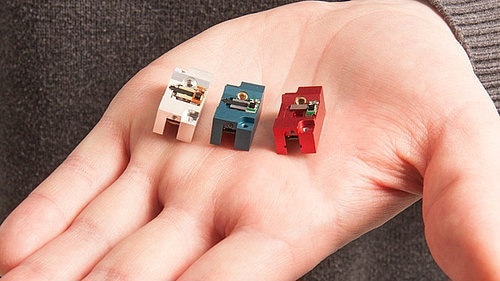
PIOne nanopositioning sensors are offered for a range of requirements: Blue: 0.5 μm signal period, for velocities >200 mm/sec; silver: 0.5 μm signal period, for vacuum conditions; red: 2 μm signal period, for velocities >800 mm/sec
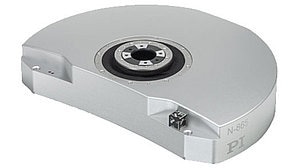
The N-865 is a distinctive, 6-axis, low-profile nanopositioning system for accurate alignment based on the PIone high-resolution encoder and PI’s patented PiezoWalk technology.
The tasks of developing the basic requirements in conjunction with their technical realization can be rather challenging. For the developer, the result is an exhilarating combination of optical, mechanical, and electronic components that operate in symbiosis as a single unique product.

Dr. Axel Grabowski, Head of Sensor Development.
We developed PIOne because there were no small sensors on the market with a resolution of 1 nm or better,
Some of the available sensors achieve such resolutions, but are larger than some of our miniaturized positioning systems, along with power requirements that are too high in many applications. Therefore, the objective for the in-house development was to design a small nanopositioning sensor with maximum resolution and moderate energy consumption. With the PIOne incremental position sensor, we have succeeded.
Dr. Grabowski, Head of Sensor Development, PI
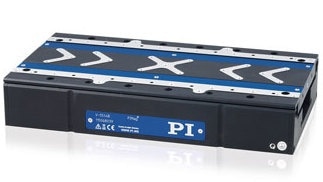
V-551.4D, 100 mm travel linear stage equipped with a PImag® 3-phase linear motor and a PIOne high resolution incremental linear encoder
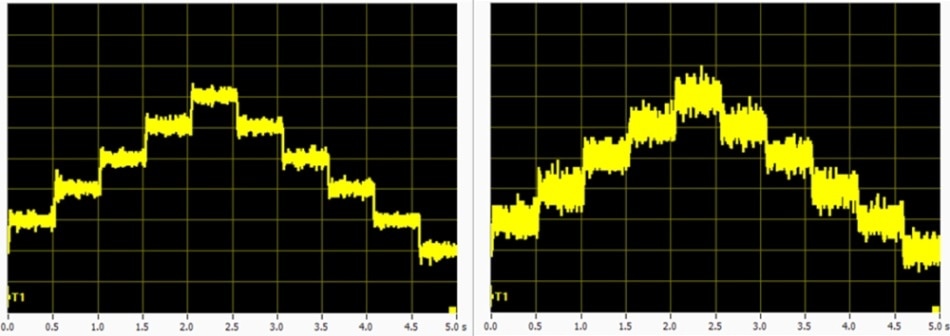
High resolution motion: 0.5 nanometer steps (right) and one nanometer size-steps performed with a V-551.4D linear stage.
Picometer Resolution
The PIOne sensor head comes equipped with a Mach-Zehnder interferometer, where the optical paths are equalized and fully symmetrical, offsetting any environmental disturbances such as humidity and temperature.
The resolution of the incremental sensor, i.e. the smallest measurable displacement of the measuring head relative to the scale, is in effect set by the period length of the sensor signal (encoder pitch), the electronic interpolation factor and the noise of the processing electronics.
However, since the signal noise typically restricts the interpolation factor, it is not possible to set this parameter arbitrarily high – the shorter the signal period, the greater the effective resolution and linearity.
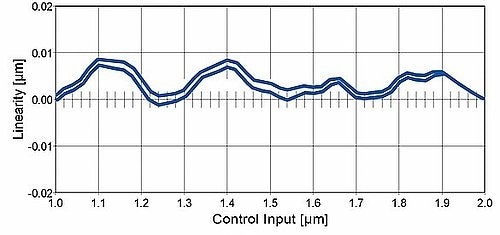
PIone linear encoders offers superb linearity. The graph illustrates test data of a linear stage equipped with a NEXACT® piezo linear motor, controlled by an E-861 motion controller. The linearity deviation is <10 nm.
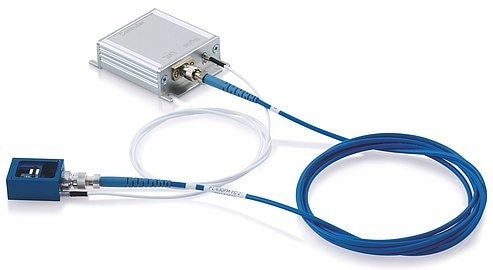
Optional fiber light source to minimize heat: light from an external source is coupled into the sensor head via an optical fiber, replacing the internal diode.
Achieving a resolution of 20 picometers and beyond, The PIOne sensor owes its superior capabilities to its small signal period of 0.5 µm and optimized signal processing circuit. For example, acquisition of interpolation with a factor of 4,000 is obtainable without any noise penalty.
Since the signals of the PIOne are compatible with a variety of PI motion controllers, utilization of the sensor is possible across a range of nanopositioning systems with different drive technologies, including 3-phase motors, voice coils, and piezo-ceramic motors.
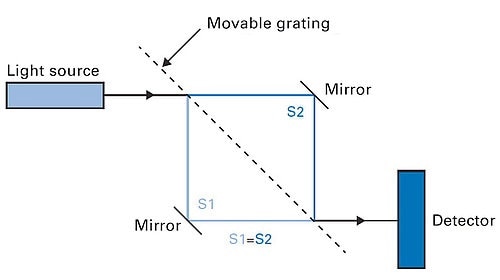
This schematic diagram is the illustrative of a Mach-Zehnder interferometer with equalized beam paths. A beam projected from a laser diode is divided into two optical beam paths when passing between two gratings and then unified to a single beam again. The interference pattern generated is detected by a photodiode and then further processed.
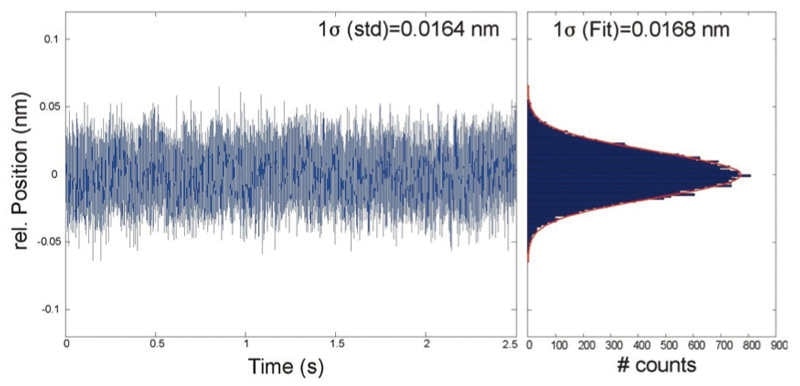
Noise measurement of a positioning system with the PIOne at 1 MHz bandwidth and 18-bit resolution of the sensor input: 16 picometer RMS and 100 picometer peak-to-peak.

This information has been sourced, reviewed and adapted from materials provided by Physik Instrumente (PI) GmbH & Co KG.
For more information on this source, please visit Physik Instrumente (PI) GmbH & Co KG.